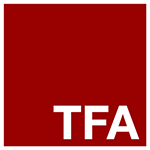I just got the copies of What is a Life? in the mail. Thanks for sending them. It looks good and as always I’m happy to be part of it and wish I had more to contribute than “fuck yeah!”
I was looking over a hardcopy of the thing today (it’s great how a hold-able object is different than a computer screen), then read the stuff on refrains in the earlier post. I’m curious if what I’m about to describe counts as a refrain.
I’m rather shy by inclination. I’ve worked a long time in different affective labor and in these – in particular my time working for one of the business unions – I got a lot better at managing socializing, and coming off as confident even if I don’t feel it. Partly this is because I had to mix in with lots of different folks than I had before and do so successfully (as measured by rather draconian bosses) and I got to feeling a lot more confident as a result. But also because I had a framework: there’s an agenda to the conversations. Figuratively (a goal, usually to get the person to convince themselves to sign a union card) and literally (broken up into five sections). Successfully navigating the agenda means asking lots of questions, getting the person to talk, knowing when to ask a follow up question (“I haven’t had any major run ins with the boss.” “It sounds like you have had some minor ones, though. What are some of those?”), etc.
After I did this for a while I got a lot better at situations, like being at parties and so on. “Where are you from? Where do you live? How long have you lived there? Where do you work? How long have you worked there?” Etc. Folk generally like the attention, and begin to feel like “this guy’s listening to me, he’s interested in me.” It made social interaction way easier for me. Not quite a refrain, I think, so much as a key or a scale or a chord – a few things one can do instinctively. The goal is to get people to tell stories, and to elaborate on those stories, and when appropriate tell corresponding stories, and if one does it enough one establishes a few techniques (which form an ensemble) one can use with some measure of success and confidence. It’s a way to provide one of the shapes required for a flow to happen in a social setting, since without any form or channel there can be no flow (just dissipation at infinite speed). It’s also ambivalent, something functional for positive as well as for negative ends, like the business unions’ instrumentalization of this mechanism.
There’s also a particular enjoyment of interacting with folk in a visit, sharing a refrain – the same feeling as in playing music with people, being in synch in time together, someone makes a change and it just fits and you make a change with them or in response. It’s complicated in this model, though, because the organizer has the agenda consciously and the other person doesn’t.

1 Comment